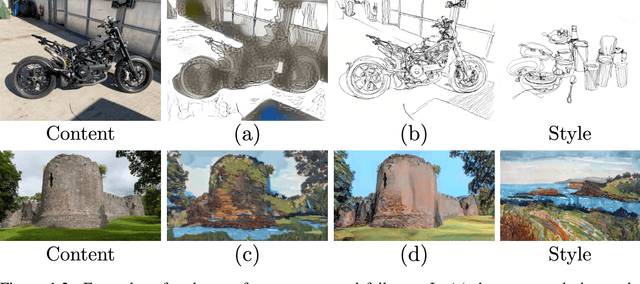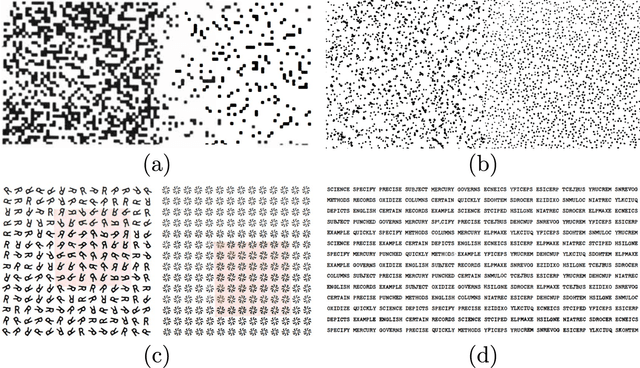Non-Parametric Neural Style Transfer
Paper and Code
Aug 29, 2021



It seems easy to imagine a photograph of the Eiffel Tower painted in the style of Vincent van Gogh's 'The Starry Night', but upon introspection it is difficult to precisely define what this would entail. What visual elements must an image contain to represent the 'content' of the Eiffel Tower? What visual elements of 'The Starry Night' are caused by van Gogh's 'style' rather than his decision to depict a village under the night sky? Precisely defining 'content' and 'style' is a central challenge of designing algorithms for artistic style transfer, algorithms which can recreate photographs using an artwork's style. My efforts defining these terms, and designing style transfer algorithms themselves, are the focus of this thesis. I will begin by proposing novel definitions of style and content based on optimal transport and self-similarity, and demonstrating how a style transfer algorithm based on these definitions generates outputs with improved visual quality. Then I will describe how the traditional texture-based definition of style can be expanded to include elements of geometry and proportion by jointly optimizing a keypoint-guided deformation field alongside the stylized output's pixels. Finally I will describe a framework inspired by both modern neural style transfer algorithms and traditional patch-based synthesis approaches which is fast, general, and offers state-of-the-art visual quality.
 Add to Chrome
Add to Chrome Add to Firefox
Add to Firefox Add to Edge
Add to Edge